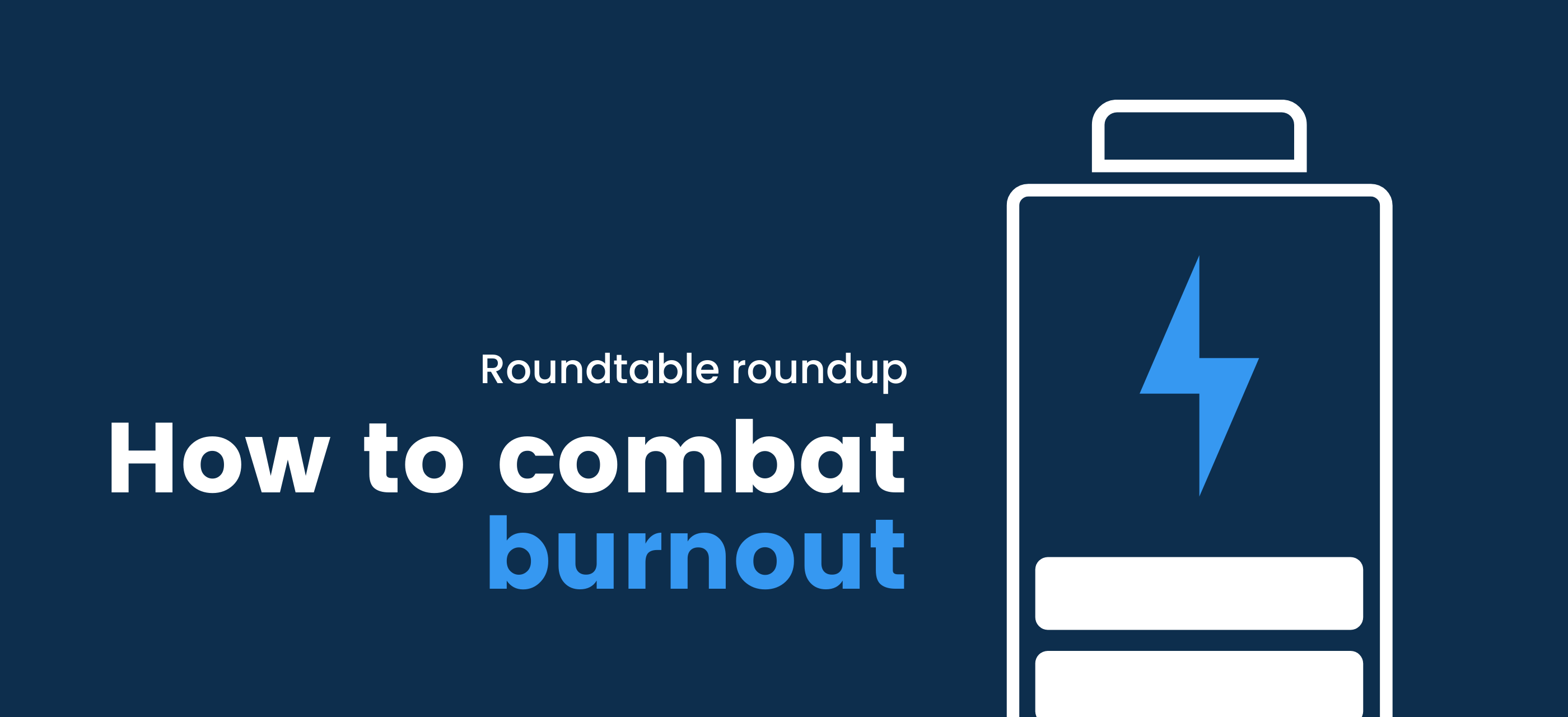Meeting new demands
Companies are making a concerted effort to meet flexibility demands. Amid the Great Resignation, there is a great reshuffle occurring with the provision of flexible work options at the top of many an organisation’s strategic to-do list.
There has been an 83% increase in the number of job posts mentioning flexibility since 2019, posts that garner 35% more engagement, according to LinkedIn’s 2022 Global Talent Trends report.
However, the broad increase in flexibility is not an organisational panacea. Work-life balance, compensation and benefits, and inclusivity are the top employee priorities in 2022. Each must be addressed in light of the others to ‘win’ the war for talent, while flex strategies can be used to enable change across the board.
1. Work-life balance
Pre-Covid, a good work-life balance was among candidates’ top priorities, and as Australasia enters a post-Covid world, it sits in pole position. Flexible role options combined with family-friendly policies and other measures go some way towards meeting this priority yet can represent a double-edged sword if boundaries between an individual’s work and home life become blurred.
A National Bureau of Economic Research (NBER) study found that during lockdown periods in North America, Europe, and the Middle East, the number of emails sent after business hours rose by 8.3%, increasing the average work day by approximately 48.5 minutes.
Government mandated stay-at-home orders offered researchers unique insight into how people work remotely, with numerous studies showing that for many, remote meant more hours that ultimately impinge upon home life. Outside of lockdowns, this potential for excess hours, combined with an ‘always-on’ culture, remains a threat.
Certain elements of flexibility can create work-life issues if not kept in check, despite their simultaneous potential to better the balance. Ellen Galinsky, president and co-founder of the Families and Work Institute identifies four key contributors to an individual’s life: family, job, personality, society. Viewing these contributors as equal stakeholders is one way to attain equilibrium, with the onus of setting better boundaries falling on organisations as much as employees.
2. Excellent compensation and benefits
Salaries in Australia have stagnated since at least 2013, with wage-growth rates rising at less than half the OECD average according to Jim Stamford of the Centre for Future Work. A range of factors including a 30-year decline in unionisation, workers not switching jobs often enough, caps on public sector wages and others have all been posited as reasons for salary increases that fail to meet inflation.
Employees have always ranked excellent compensation and benefits as a priority and in 2022 it’s no different. Candidates across Australia and New Zealand place this as their second-most important factor when considering a role.
Quarters three and four in 2021 saw a slight boost in private-sector wages but this growth was tepid at best, and even excluding June’s poor performance fell in line with the past decade’s figures. With the latest Australian Consumer Price Index (CPI) detailing a 3.5% increase — around 1.2% over wage-growth — the state of real wages remains an issue.
While there’s no easy answer to Australia’s wage crisis, organisations would be wise to recognise the “strong positive link between real worker wage growth and idiosyncratic firm-level productivity growth” as revealed by microdata. Likewise, there is a link between what employees would deem unattractive compensation packages and the ‘yolo’ attitude that is, in part, fuelling the Great Resignation.
Harvard University professor Richard Walton notes that fair compensation is a major characteristic that impacts work-life quality; while salary and work-life balance may be distinct priorities and values, they are inextricably linked.
Flexibility in regards to benefits offers a means to mitigate Australia’s real-wage issue, at least in part, and can help attract and retain talent. Hyper-personalisation (a talent trend that’s set to reshape work in 2022 and beyond) can be applied to benefits packages, creating a real drawcard by allowing employees to select and prioritise the benefits that help them the most.
3. Inclusivity amongst colleagues and culture
Between April 2020 and June 2021 the number of Australasian employees citing an inclusive workplace as a priority increased by 9.4%, higher even than job security, which grew by 8.7%, according to LinkedIn data. Inclusivity and diversity are important to employees across all age ranges but are of particular importance to younger talent.
In a CNBC survey of more than 8,000 employees, 78% of the respondents said working for an organisation that prioritises diversity and inclusion was important, with more than half designating it “very important.”
Talent are pushing for inclusive workplaces, but they also want vocal leaders. More than 60% of those surveyed said executives should speak up when it comes to hot-button political and social issues. In the context of Me Too, Black Lives Matter, and other key social movements of the past decade, inclusivity is now an essential part of company culture.
For corporations, diversity’s value as a top and bottom-line driver is better understood in 2022 than ever before. A host of research from McKinsey and other think tanks clearly indicate that diversity is good for business.
It’s also good for employees, with knock-on business benefits: Australians who work in inclusive teams are 19 times more likely to report job satisfaction and four times more likely to stay with their employer according to statistics from the Diversity Council Australia.
Effective organisational strategies that aim to combat bias — be it on the basis of gender, sexuality, race or other elements of identity — will stand companies in good stead through 2022 and into the future. AI-enabled hiring is one such strategy that’s often lauded as a bias buster, and experts predict it’s here to stay.
However, it should be a complementary way of enabling D&I initiatives rather than a be all and end all. There are inherent issues that must be addressed before AI-enabled recruitment can be relied on; predictive AI can perpetuate as opposed to disrupt the status quo when modelled on inadequate or biased data.
Strategies such as job-sharing and role design based on unique employee needs are as effective inclusivity measures that simultaneously give companies access to a larger pool of talent.
Meeting the demands of the market
The world of work is undergoing a dramatic shift. While initially precipitated by Covid-19, this shift is really being driven by changing societal mores that impact organisations as much as they do individuals’ outlooks.
Meeting the demands of the talent market in 2022 is a matter of first recognising these value changes, then tackling them head on. Beamible’s Flex Playbook contains actionable solutions from experts that address work-life balance, personalising the work experience, and implementing D&I strategies.
Download your free copy of the Flex Playbook or contact us to find out how the Beamible platform can help your business future-proof its talent strategy.





